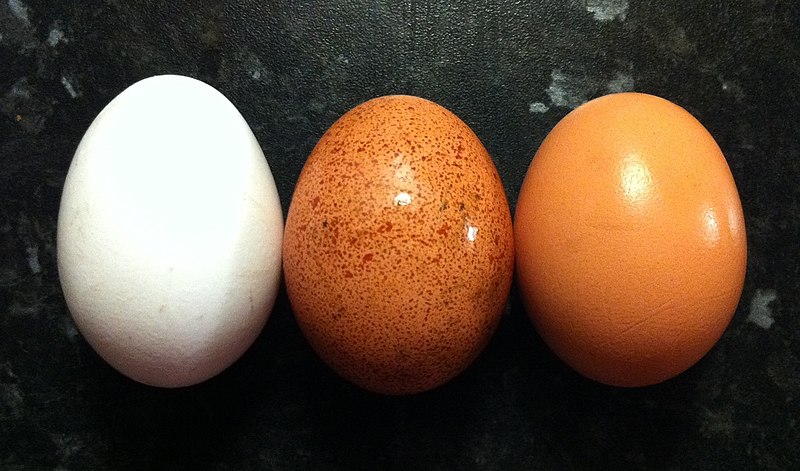Downloads:

General information
Eggs
Milk
Yoghurt
Cheese
Poultry
Keywords
Poultry, eggs, milk, cheese, yogurt, dairy, daily consumption, proteins, healthy
Level
General information
The foods that make up the upper-level protein group, poultry, milk, eggs, cheese and yoghurt are rich in a wide variety of minerals. The consumption of these foods and the quantity of these foods should be in accordance with the age group and physical activity of the individual.
Eggs
The eggs we usually consume are hen's eggs (Gallus gallus). The European Union regulates the marketing of these eggs with rules on production, marketing, labelling and hygiene.
Egg production systems. Depending on the type of farm, eggs for consumption are called:
Eggs from caged hens.
Eggs from free-range hens.
Organic eggs produced.
Egg products. The term egg product refers to new ways of presenting, preserving and marketing eggs out of their shells, ready for consumption. It is a product consisting mainly of all or part of the egg contents.
Milk
Milk is an exceptionally rich food. There are different ways of presentation and treatment for its preservation:
Liquid milks:
- Raw milk.
- Fresh pasteurised milk.
- Sterilised milk.
- UHT. (Ultra-high temperature sterilisation)
Concentrated milk.
Evaporated milk
Condensed milk
Powdered milk.
Yoghurt
Yoghurt is a fermented milk obtained by mixing two dairy bacteria, streptococcus thermofilus and lactobacillus bulgaricus. At the end of fermentation (45°C for 2 hours), the coagulated milk turns into yoghurt.
Natural yoghurt: No additives. Depending on the amount of fat, they are: whole, semi-skimmed, skimmed or enriched with cream.
Sweetened plain yoghurt: With added sugar.
Sweetened yoghurt: with the addition of authorised sweeteners.
Yoghurt with fruit or juice.
Flavoured yoghurt: with flavourings to give different flavours.
In addition to these types of yoghurt, we can find other varieties on the market, such as Greek yoghurt, in which the liquid whey is extracted from the milk, resulting in a thicker product, with less sugar and more protein. Kefir is a dairy product similar to liquid yoghurt, fermented through the action of a group of yeasts and bacteria also called grains or nodules.
Cheese
There are countless varieties of cheese, whether made from cow's, sheep's or goat's milk, cheese is made using rennet, enzymes that coagulate and thicken the milk. This rennet can be of animal origin (obtained from the stomach of lactating ruminants), vegetable origin (obtained from fig or thistle sap), microbial or synthetic. The water is removed from the milk, so the cheese is a concentrate of proteins, vitamins, mineral salts and easily digestible fat. For all these reasons, cheese is full of benefits for our organism and the WHO (World Health Organization) recommends its consumption.
Poultry
Poultry refers to domesticated birds used in food, for consumption of its meat. The term typically includes members of the orders Galliformes, such as chickens and turkeys, and Anseriformes, waterfowl such as ducks and geese. However, this is not a strict classification, and the term can also refer to other types of birds that are used in cooking, such as pigeons and even ostriches. For birds such as pheasant, quail and wild ducks, the term "game birds" is commonly used.
Description
The foods that make up the upper-level protein group, poultry, milk, eggs, cheese and yoghurt are rich in a wide variety of minerals. The consumption of these foods and the quantity of these foods should be in accordance with the age group and physical activity of the individual.
Labels
Benefits
Dairy products are important for the proteins and vitamins they contain and for the calcium reserves needed by the body.
For people with lactose intolerance, we recommend lactose-free dairy products or products from other seeds such as soya beans enriched with calcium.
Eggs are one of the few foods that do not contain carbohydrates. Each egg is rich in fat, contains a considerable proportion of excellent protein, and good amounts of calcium, iron, vitamins A and D, as well as thiamine and riboflavin. Even having a high cholesterol content found in the yolk, most of this fat is unsaturated, and it is considered a good nutritional choice.
Poultry, such as chicken and turkey, are good for heart health. Also, poultry costs less than meat and fish. How should I prepare poultry? Chicken can be baked, broiled, roasted, grilled or fried. If you fry chicken, use healthy vegetable oil. But not all ways of cooking poultry are suitable. Fried and battered chicken is high in fat and should not be eaten. In addition, spicy chicken, especially in fast food restaurants, has a high salt content and is also not recommended.
Representative Products
The Payoya goat is an autochthonous Andalusian breed, capable of offering excellent milk production, the basis of an important cheese-making tradition.
Hens in Europe.In Europe there are more than 1000 types of chicken breeds, here are some examples.
The Padua hen, Padovana or "tufted hen" is a hen of British origin.
Leghorn hens of Mediterranean origin, specifically Italian.
Gallic Bresse. Originating from Bresse, France. The Faverolles hen is another French breed of hen.
Alsatian hen. They originate from Alsace, a region formerly French, but now divided between France and Germany.
The Portuguese Pedresa hen (in Portuguese, galinha pedrês portuguesa) is a native breed originating in northern Portugal.
Hens in Malaga and Andalusia, the vast majority of which are of Mediterranean type, the following breeds stand out as autochthonous breeds: Armiñada, Azul, Blanca, Caniza, Franciscana, Negra and Perdiz.
Risks
An open egg is an ideal medium for microbial growth; it is therefore preferable to open eggs just at the time of use. In addition, the natural bacteri-cide contained in the egg white (lysozyme) becomes ineffective in contact with air and no longer pro-tects the egg.
Further references
Further references Webgraphyin English:
https://www.uspoultry.org/
https://www.cheese.com/
https://www.yogurtinnutrition.com/
https://www.bbcgoodfood.com/howto/guide/ingredient-focus-eggs
https://ec.europa.eu/info/food-farming-fisheries/animals-and-animal-products/animal-products/milk-and-dairy-products_en
Webgraphy in Spanish:
https://ochosabores.com/hecho-en-andalucia/quesos-andaluces-que-son-un-tesoro/
https://www.institutohuevo.com/
http://www.saboramalaga.es/
https://www.payoya.com/raza
https://www.granjasantaisabel.com/gallinas-razas-autoctonas.php
 Play Audio
Play Audio

